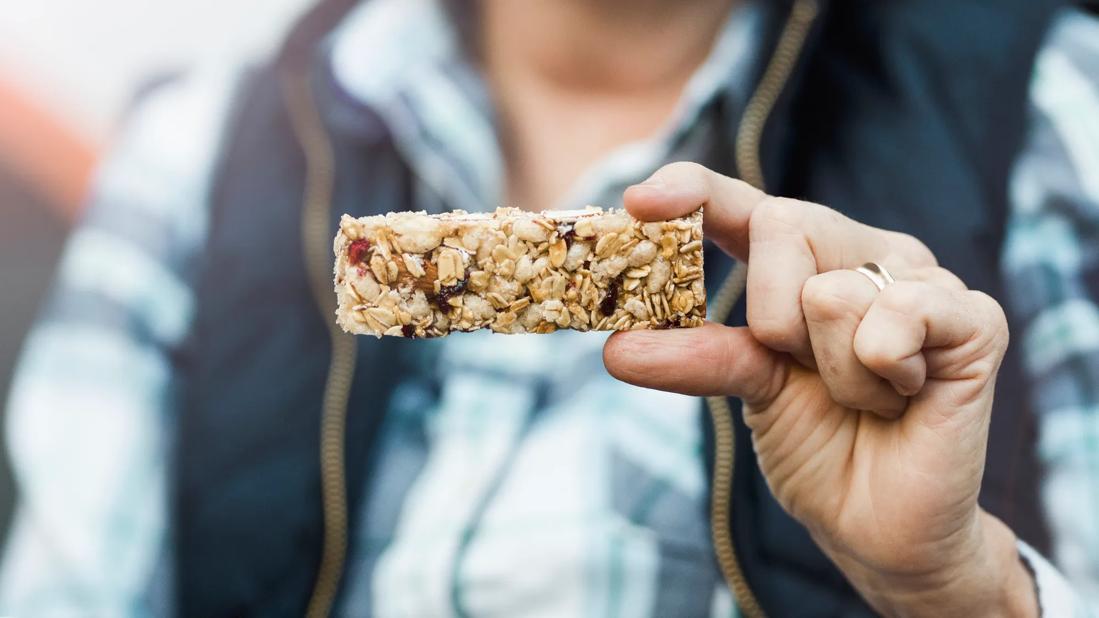Review the ingredients, watch for sugar and fat, and choose one with the right amount of protein for your needs

Grocery store shelves are packed with all types of snack or meal replacement bars that claim to give you a nutritional boost. But the bars you’re buying may not be as beneficial as you think.
Advertisement
Cleveland Clinic is a non-profit academic medical center. Advertising on our site helps support our mission. We do not endorse non-Cleveland Clinic products or services. Policy
There are hundreds of different brands and types of products on the market. So, it can be difficult to know which ones provide good nutrition and which ones just add extra calories, fat and sugar to your diet.
Registered dietitian Beth Czerwony, RD, LD, shares a few tips on how to pick the best healthy bars.
With our busy lifestyles, we tend to look for grab-and-go options like healthy snack bars. You may want something with nutrients to boost energy, curb hunger or help fuel your body.
“Health, weight loss, performance and nutrition bars aren’t meant to replace a healthy meal. But in our busy world, sometimes, we need a little help filling in the nutritional gaps,” recognizes Czerwony. “These bars can help, but only if you choose wisely.”
Look for fiber and protein in your snack bars and avoid high levels of sugar and fat. Because when it comes to offering you the best benefits and fuel, not all options are created equal.
Regardless of the type of bar you’re searching for, keep these tips in mind:
When you’re looking at a bar, read the ingredient list first. You’ll want to do this before you look at the nutrition facts. The grams of protein, fat and carbohydrates — all macronutrients — may seem normal. But there could be hidden ingredients.
Advertisement
Manufacturers may also add extra fat, sugar and other chemicals to make the bar look or taste healthy — even when it’s not. So, sometimes, a health bar is no better than reaching for a candy bar, warns Czerwony.
Do you want a bar that’s high in carbs and protein? Or a quick breakfast or meal replacement?
Some bars are higher in protein, while others have added antioxidants or special ingredients to boost performance.
If you’re looking for healthy meal replacement bars, choose a product that has at least 300 calories and 10 grams of protein per bar. This provides ample calories, carbohydrates and protein to help maintain energy and blood sugar levels throughout the day.
Many of these bars are high in fat and sugar. If you’re eating it as a meal replacement, it should have no more than 4 grams of added sugars and 4 grams of saturated fat per bar.
If you’re eating it as a snack, choose bars with no more than 2 grams of added sugar or 2 grams of saturated fat per bar. Fats and added sugars — cane juice, molasses, honey and others — increase the risk of heart disease, diabetes and arthritis.
Sugar alcohols are another common ingredient in energy bars (and energy gels) because they have fewer calories than sugar. Manufacturers frequently use sorbitol, xylitol, isomalt and mannitol. Recent research shows that high amount of sugar alcohols may increase your risk for cardiovascular disease.
It may be hard to avoid sugar alcohols in bars that claim to be “sugar-free.” Czerwony suggests limiting how much sugar alcohols you consume. And if you don’t routinely consume sugar alcohol, you may experience cramping, bloating and diarrhea. Our bodies digest sugar alcohols very slowly. That’s because our bodies don’t fully break them down.
Look for a product that has at least 2 to 3 grams of dietary fiber per bar. But be careful because some products include chicory root or other types of fibers to increase the fiber artificially. Not only are you getting an added ingredient, but you may also experience gas.
Look for products that have natural fiber from fruits, vegetables or nuts. These are sure to give your body the nutrition it needs in the right amounts.
Czerwony also advises being careful about eating a fiber-rich bar before or during a rigorous workout. It can increase your risk of stomach upset or cramps. Fiber is hard for your body to break down. Aim for less than 3 grams of fiber per bar when you’re fueling for performance.
Many bars claim to be “performance-enhancing” products and offer significant amounts of protein (greater than 20 grams per bar). If you’re using the bar as a meal replacement, 10 grams of protein is adequate. If you’re eating it as a snack or a supplement to a meal, the bar should have 5 grams or less of protein.
Advertisement
Your muscles need some protein to grow and heal, but not nearly as much as many people think. Protein is one area where “more is not necessarily better.” Your body can only store so much protein. Once you’ve met that amount, the rest gets eliminated.
Health bars can support your nutrition, but they’re not meant as a replacement for a healthy diet. Your body needs a balanced diet of fruits, veggies, whole grains, healthy fats and lean protein in their most natural forms. If you’re looking for a product to help you fill the nutritional gap, the right bars can meet that need.
“Keep the ingredient list simple and read the label to help you make better choices,” reiterates Czerwony. “Eating these bars in addition to a healthy diet can help keep you going strong all day long.”
Advertisement
Learn more about our editorial process.
Advertisement

With a focus on internal cues for hunger and fullness, this eating style may revolutionize your relationship with food

A typical recommended balanced diet is half fruits and veggies, a quarter protein and a quarter grains

Foods high in protein, fiber and water can help keep hunger at bay

This quirky food trend is harmless, as long as you’re getting enough protein, fiber and healthy fats

Wrapped or sandwiched, try to choose fillings and condiments that are minimally processed, low in saturated fat and high in fiber

Set yourself up for success by carefully choosing your recipes, storage containers and prepping day

These breaks may have some benefits — but they promote an unhealthy attitude toward food

A study shows that eating a late dinner can increase your chance of having obesity

If you’re feeling short of breath, sleep can be tough — propping yourself up or sleeping on your side may help

If you fear the unknown or find yourself needing reassurance often, you may identify with this attachment style

If you’re looking to boost your gut health, it’s better to get fiber from whole foods